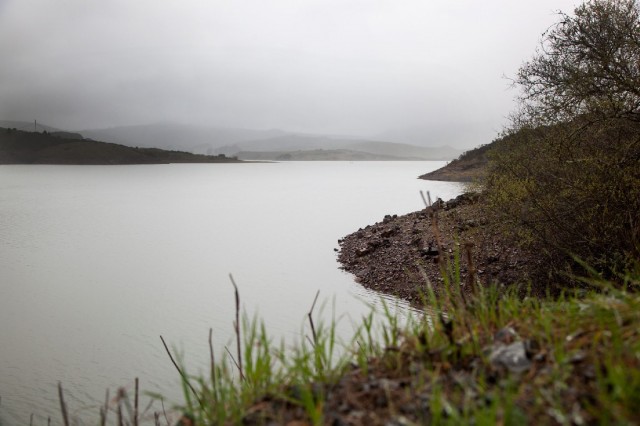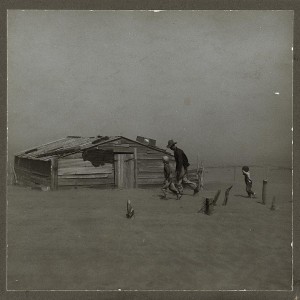
Last week, Jon Christensen, a journalist/historian/scholar of California and the West who works at UCLA (and formerly at Stanford), tweeted this:
"The Five Stages of Drought in California: Drought. It's raining. But the drought is not over. What drought? Drought."
I think we all have an idea what he means. The talk of drought is everywhere, but if you look up and see our greening hills and the water ponding on streets and coursing down rivers and streams, it sure doesn't look like a drought.

But in California, as elsewhere, there's more than one kind of drought.
On the one hand, you have meteorological drought, the kind everyone thinks of, a long, pitiless stretch of rainless weather that results in widespread hardship and a calamity like the Dust Bowl. And in fact, California's 2013 was a little like that, long and dry, with record low rainfall for most of the state during the calendar year. The alarming part was the disappearance of storms at the beginning of 2013, typically the wettest part of the state's wet season, and their failure to appear again as our current wet season began last October. January 2014 was another record-dry month in many locations, and as February opened, the current season was on track to be the state's driest ever.
Then, the persistent ridge of high pressure blocking storms from reaching the state finally gave way. Rain and snow began falling; in some places, lots of it. Measurable rain was recorded at Shasta Dam on 19 of the 28 days between Feb. 6 and March 5. A weather station at the top of Marin County's Mount Tamalpais has recorded 32.38 inches of rain during the same period. That mountain deluge has helped raise Marin Municipal Water District reservoirs from just about half of capacity four weeks ago to three-quarters full now, and the runoff continues.